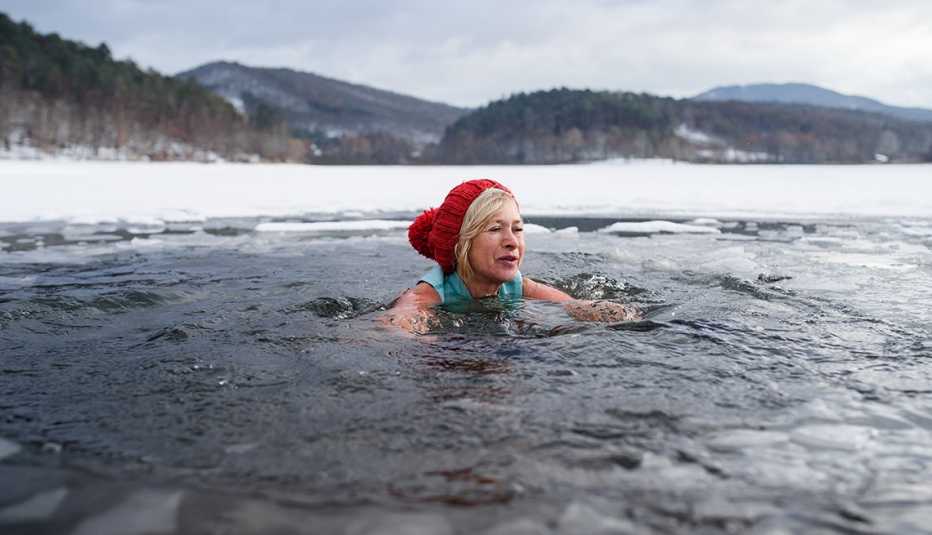AARP Hearing Center


Leslie Mazur, a 47-year-old physician assistant from Littleton, Colorado, plunges into tubs of icy water on a regular basis. She says it soothes her aching knees and back, relieves anxiety, lifts her mood and helps her sleep. Her partner, Ladd Richland, a 60-year-old ski instructor and life coach from Breckenridge, Colorado, is a cold-plunger too. He says that by combining meditative breathing with cold-water dunks, he’s training his mind to handle other challenges.
Karen Šulek, 53, an executive leadership coach from Reston, Virginia, says that she emerges from dips in chilly lakes and rivers feeling like a “beautiful piece of polished silver.” She thinks her cold-water swimming habit is one reason she rarely gets sick.
Help for sore muscles, exercise recovery
Scientists looking at the physical and mental effects of intentional cold-water exposure — in icy tubs, cold showers and chilly natural waters — say such enthusiasts may be on to something. It’s possible, they say, that the benefits go beyond relieving soreness and aiding exercise recovery, the best-studied uses. But large, well-designed studies that firmly back up broader health benefits are lacking, they say.
“We know a lot about the potential risks, in terms of the science, and far less about the potential benefits,” says Heather Massey, a senior lecturer in sport, health and exercise science at the University of Portsmouth, in the United Kingdom.


Still, interest is high, thanks in part to celebrities such as Kristen Bell, 43; Madonna, 65; and Josh Brolin, 55, sharing ice-bathing photos on social media.
Massey, a cold-water swimmer herself, is among those trying to help science catch up with the popular interest. She’s working on a large study that might show whether people who swim in cold water reduce their risk of depression. A smaller pilot study was promising, she says.
Improvements for immunity, blood sugar?
Other preliminary studies have suggested regular cold-water immersion might improve blood sugar regulation, boost immunity, lower levels of harmful blood fats and alter body fat in helpful ways, says James Mercer, a professor emeritus at the Arctic University of Norway’s Institute of Health Sciences.
But in a published review of research done mostly in cold-water swimmers, Mercer and his colleagues cautioned that findings remained hard to interpret. The studies, which used using varying water temperatures, methods and types of people, haven’t sorted out the direct effects of cold water from the effects of being outdoors, exercising and doing something challenging with other people, Mercer says.
“There are some studies showing the cold air alone is enough to trigger some of these responses,” he says. “So, you could argue that you don't have to go in cold water at all.”
With all that said, here’s what experts say happens when you put your body in very cold water – including what can go wrong:




































































More From AARP
Wondering How to Get More Energy? 8 Ways to Get a Boost
Tips and tricks to quickly beat an energy slumpWhen to Use Ice vs. Heat for Pain
Both can be helpful for injuries
How Cold Weather Affects the Lungs
Frigid, dry air can make it harder to breathe